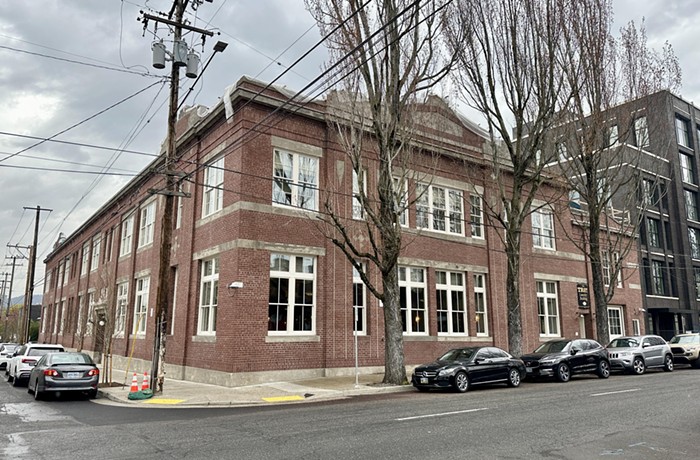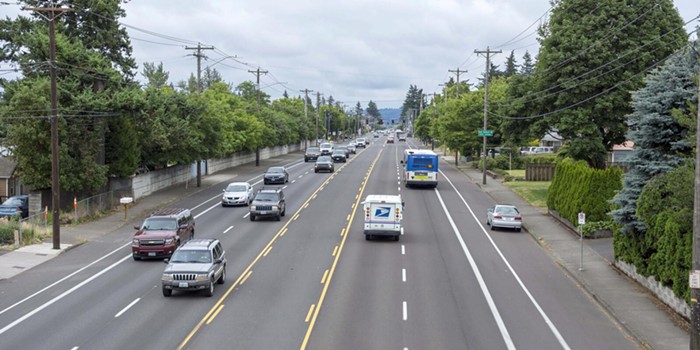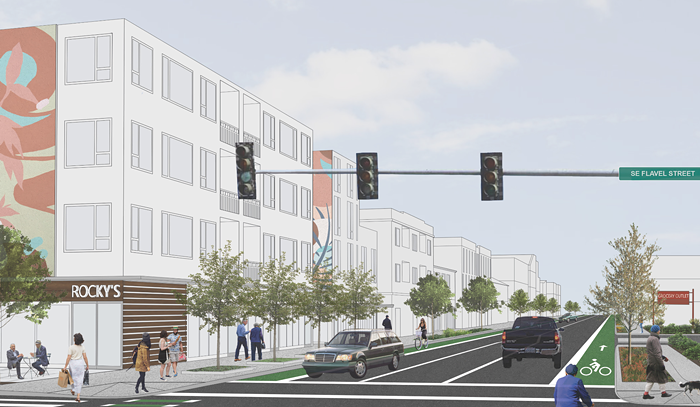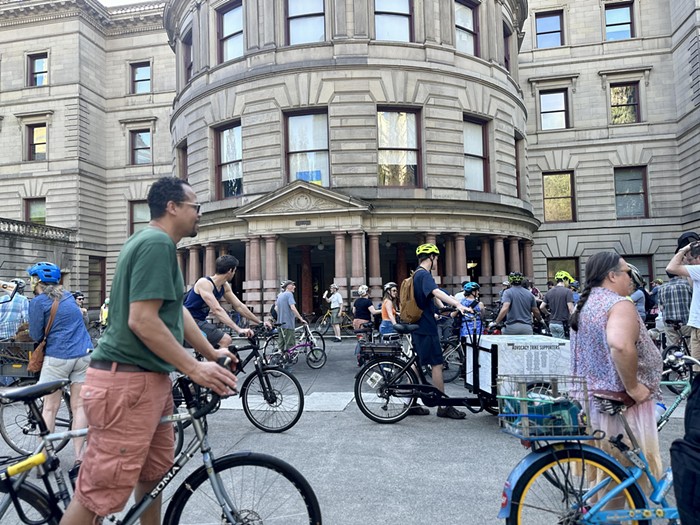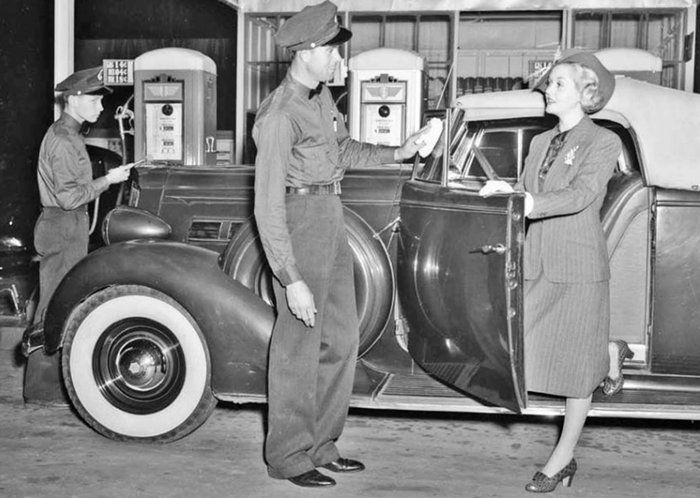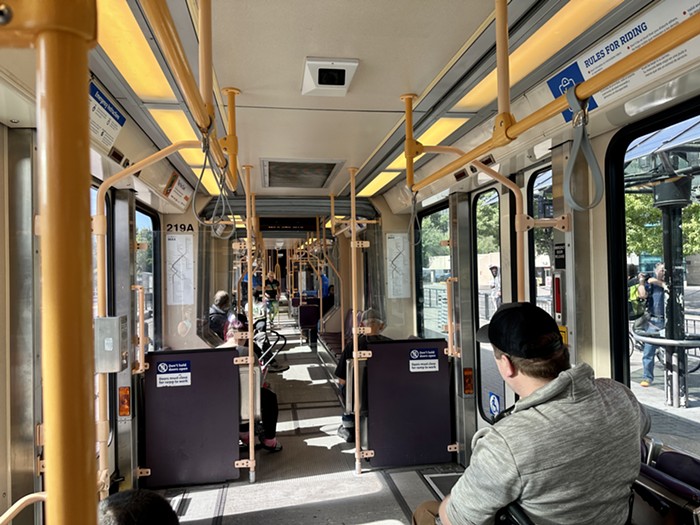STOP THE PRESSES! At the Columbia River Crossing project sponsor's council meeting this morning, Mayor Adams piped up for two good ideas. After the mayor raised environmentalist allies' ire by proposing and approving the fattest, car-friendliest 12-lane option for the bridge back in February, his wheels turned toward the recognizable "sustainability champion" direction this morning. But pressure behind the bridge — and wariness of high tolls — is rolling forward just as usual.
At the beginning of this morning's meeting, the group of nine regional government leaders debated how to further study cost-cutting options for the $4.2 billion bridge project. Oregon Department of Transportation director Richard Brandman mentioned reusing portions of the current bridge rather than just throwing it all away (good idea, guys!) when Adams said, "So is everything on the table? Including lane capacity? I'd like to see that put on as a choice on the menu of choices we can be looking at for cost and performance goals." That opens the door to possibly cutting the number of lanes down from 12 if it saves money or if the environmental impact statement (due Spring 2010) shows it's a much greener plan.
When we've hounded Adams for his 12-lane stance over the past couple months, the mayor has always reiterated that the Council approved a bridge "up to 12 lanes wide." It's a relief to see he's making the committee take that "up to" option seriously.
Second shining moment: the new bridge replacing the I-5 to Vancouver will most likely be two "stacked" bridges. All the designs drawn up until this point seem to have taken for granted that cars will drive across the top of the bridge and transit, bikes and pedestrians will be assigned to the potentially-cave like bottom level. The under-level bike path would be complete with "caging" running along the sides most of the length of the bridge. BUT this morning, Adams asked for the group to look into flipping the proposed design, putting bikes/ped/transit on top and cars on the bottom level. The group was quiet for a moment. "That's the first time I've heard that idea," said one committee member. "Reversing the stack... will that work?" Well, said Adams, it's worth looking into at least.

Also of note: the new bridge plans to use electronic tolling. That means the Washington and Oregon governments keep your credit card on file and link it to your license plate so every time you cross the bridge, the toll is automatically deducted. There is an anonymous cash-only option but still, cue Big Brother commuter paranoia freak out.
More on the bridge plans - including some tense words from ODOT that "we WILL cut a ribbon on this project!" below.
At one point during the meeting, Tim Leavitt from C-Tran said he had heard some rumors that Oregon legislators moved to block funding on the project. Matthew Garrett, director of ODOT, replied sternly that, "I can assure you that the governor, legislative leadership and my organization are committed to this project." Metro Councilor David Bragdon raised the point again, saying, "We've got to be honest that there was a lot of debate here in the legislature." Garrett repeated, "There is a commitment from the governor, the leadership and my agency on moving forward on this project. And one day we will cut a ribbon on this project. Make no mistake about that."
Whoa, okay, got it, we won't talk about the dissent in the legislature. Just like we won't talk about the bridge design. Or missing financing plans for how to actually fund the bridge. In fact, we're just going to stop talking about the largest transit project in our region's history until its ribbon cutting. ... and even after that, too, just to play it safe since ODOT will have my credit card number.
